If you think a gas mask is just for “end of the world” scenarios, you’re already behind.
Every prepper knows that when the air turns toxic—whether from chemical spills, wildfire smoke, riots, or something far worse—you won’t have time to research which mask works best.
And here’s the truth no one likes to say out loud: most of the “tactical-looking” masks sold online are junk. They’ll fog up, leak, or flat-out choke you when it matters most. So let’s talk about what actually works—and what doesn’t—when it comes to protecting your lungs in a crisis.
🥽 Why Every Prepper Needs a Real Gas Mask
A proper gas mask isn’t about paranoia—it’s about preparedness.
When modern systems collapse, the air itself becomes a threat. Explosions, refinery fires, biological agents, even tear gas during civil unrest—all turn breathable oxygen into poison.
Most preppers focus on water, food, and ammo—but air? That’s survival priority number one. You can live three days without water, three weeks without food… but only three minutes without clean air.
And that’s why every serious prepper, homesteader, or off-grid builder should understand how to choose and maintain a gas mask designed for real emergencies—not Halloween props or cheap surplus knockoffs.
🧰 Types of Gas Masks for Different Scenarios
There’s no “one-size-fits-all” in air filtration. The best gas mask depends entirely on what’s trying to kill you.
Let’s break it down:
🔸 1. Full-Face Respirators (Best for Most Preppers)
These are the classic prepper choice—tight seal, full eye protection, and compatibility with multiple filter types. They’re perfect for chemical, biological, and radioactive threats (the classic CBRN scenario).
Best For:
- Chemical spills or industrial accidents
- Civil unrest or riot control
- Biological contamination
- Long-term survival situations
Pros:
- Protects eyes, nose, and mouth completely
- Compatible with NBC/CBRN filters
- Durable and reusable
Cons:
- Heavier, hotter, and harder to communicate in
- Needs training to seal properly
If you go this route, choose masks that take 40mm NATO-standard filters (the universal thread). Anything else limits your replacement options fast.
Popular options: MIRA Safety CM-6M, Avon M50, Dräger CDR 5500.
🔸 2. Half-Face Respirators (Good for Short-Term or DIY Work)
These cover the nose and mouth only—good for dust, smoke, and short-term chemical exposure.
They’re cheaper, lighter, and easier to breathe in but leave your eyes exposed, as you can see here.
Best For:
- Wildfire smoke or air pollution
- Construction, sanding, and debris
- Light chemical cleanup
Pros:
- Comfortable, easy to wear for long periods
- Affordable and available at most hardware stores
- Replaceable filters for particulates and organic vapors
Cons:
- No eye protection
- Not CBRN-rated
These are great for quick defense during wildfire season or temporary shelter work, but not for full-scale chemical or biological events.
🔸 3. Powered Air-Purifying Respirators (PAPR)
These systems use a battery-powered fan to push air through filters—ideal for extended wear in toxic environments.
You’ll see them used in hazmat teams and industrial cleanup operations.
Best For:
- Extended exposure to toxic fumes
- Older adults or anyone with breathing issues
- Long-term shelter or bunker use
Pros:
- Easier breathing—airflow is assisted
- Lower fatigue over time
- Great seal and visibility
Cons:
- Requires batteries or external power
- Bulky and expensive
- Not ideal for fast movement or field survival
If you’re building a shelter, a PAPR can keep the air breathable when filters alone aren’t enough—especially after a chemical or radiological event.
🔸 4. Escape Hoods (Short-Term Survival)
These are one-time-use devices meant for urban preppers or people in apartments. You pull it over your head, seal it, and get out fast.
Best For:
- Fires and smoke inhalation
- Chemical or riot gas exposure during evacuation
- Fast, no-training-required protection
Pros:
- Simple and fast to deploy
- Covers face and hair
- Compact—fits in car or bug-out bag
Cons:
- Limited filter life (usually 15–60 minutes)
- Not reusable
- Minimal comfort and fit adjustment
Think of escape hoods as your “seatbelt” for air emergencies. They won’t save you in a long-term event, but they might buy you enough time to get to safety.
Recommended: Drager PARAT 4920
🔸 5. Military-Grade CBRN Masks
These are the real deal—rated for Chemical, Biological, Radiological, and Nuclear protection.
They’re what you want if you’re preparing for the worst-case scenario—EMP aftermath, warzone fallout, or biohazard release.
Best For:
- Warfare or terrorist chemical agents
- Fallout and nuclear dust
- Pandemic-level biological threats
Pros:
- Full CBRN protection when paired with proper filters
- Rugged design for combat and survival
- Long-term reliability
Cons:
- Expensive and heavy
- Needs training to use properly
- Requires rotation and storage maintenance
Look for certifications like EN 136, NIOSH CBRN, or CE 0159—anything without those is just a costume with a price tag.
Recommended: MIRA Safety M
🧪 Choosing the Right Filter
A gas mask is only as good as its filter.
Each filter type is designed for a different threat, and using the wrong one can be deadly.
Common Filter Types:
- P3 / N100: Particulate filters for dust, ash, and smoke
- A2B2E2K2: Multi-gas filters (industrial vapors, chlorine, ammonia)
- NBC / CBRN: Full-spectrum filters for nuclear, biological, and chemical threats
Rule of thumb:
If it doesn’t specify the type of protection, don’t trust it. Always go for 40mm NATO-standard filters that you can replace and store long-term.
Store filters in airtight bags with desiccants, away from moisture and heat. Once opened, they degrade fast—usually within 6 months.
⚙️ Testing and Maintenance
Even the best gas mask is useless if it doesn’t fit.
You should:
- Perform a seal test every time you put it on (cover the filter intake and inhale — the mask should collapse slightly).
- Replace filters regularly.
- Keep spare straps and O-rings.
- Clean with mild disinfectant after every use.
A leaky seal, a cracked lens, or an expired filter can turn protection into false security. Don’t treat your gas mask like a trophy—train with it.
🏕️ What Type Should You Get as a Prepper?
If you can only afford one, go with a full-face CBRN-rated mask with NATO-standard filters.
It’s the most versatile and protects against the widest range of threats—from wildfire smoke to nerve gas.
If your budget allows, have a setup for each scenario:
- Full-face mask for SHTF.
- Half-mask respirator for daily dust and smoke.
- Escape hood for your car or bug-out bag.
The best gas mask is the one that’s within arm’s reach when you need it.
⚠️ Final Thoughts
When disaster hits, you won’t be Googling “best gas mask”—you’ll be choking on air you can’t breathe.
You don’t need a bunker full of filters, but you do need one reliable system that fits, seals, and works when the rest of the world burns.
Don’t buy for looks. Buy for function. Because the day your air turns deadly, that mask will be the only thing standing between your lungs and the end.
🔧 Take Preparedness Further with No Grid Survival Projects
If a gas mask is your first line of defense, this is your lifeline when the grid dies for good.
No Grid Survival Projects gives you 70+ step-by-step blueprints for off-grid survival systems — real builds that keep your home powered, fed, and protected when the world runs out of “normal.”
Inside, you’ll discover how to:
- Generate power with DIY solar, hydro, and wind systems
- Store and filter water without a single drop from the tap
- Build a smokehouse, root cellar, and off-grid freezer that outlast blackouts
- Create a backup power hub using parts you already own
Every project comes with exact parts lists, sketches, and cost breakdowns — no fluff, no guesswork. You don’t need a workshop or fancy tools, just the will to take control of your own survival.
When the lights go out and the air turns toxic, it’s not luck that saves you. It’s preparation.
👉 Get No Grid Survival Projects now and start building your independence before the next crisis starts.
You may also like:
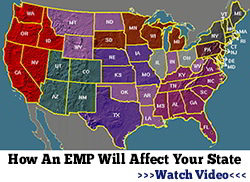 DIY Herbal Spy Kits: Plants That Could Mask Your Scent or Help You Blend In
DIY Herbal Spy Kits: Plants That Could Mask Your Scent or Help You Blend In
Cheap and Easy to Build Root Cellar in Your Own Back Yard (Video)

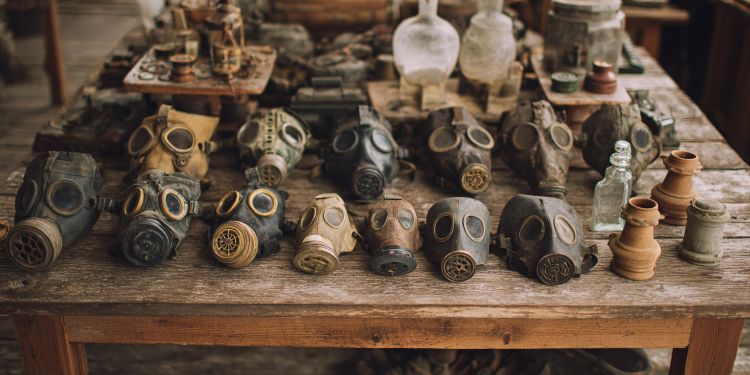







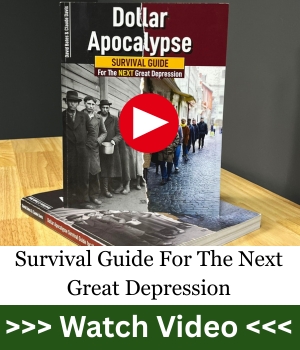
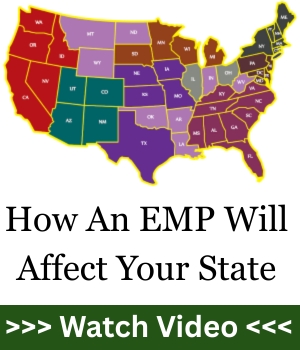
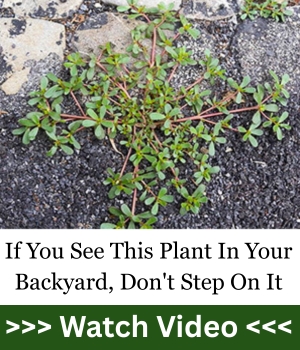

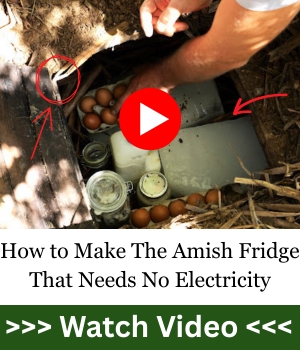
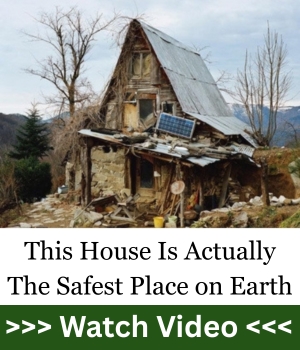
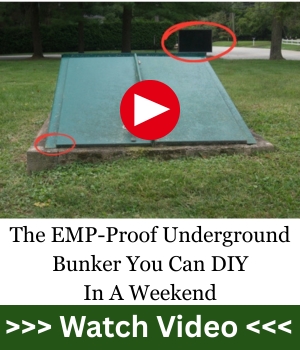
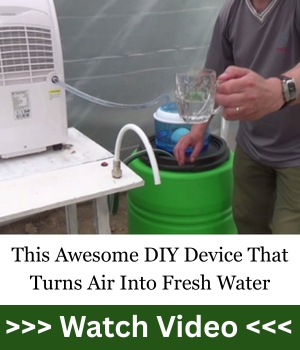





During a true horrific scenario – radiation event – protecting your lungs is the number one priority. Research the WWII atomic events. Even with the burn, radiation exposure, and direct impact injury issues the number one killer (once past being vaporized) was radioactive dust inhalation and retention in the lung tissues (cancer). Fast forward to 9/11/2001, beyond the actual collapse the significant injury item was dust inhalation, asbestos inhalation, and retention in the lungs (cancer). Your skin is an incredibly tough barrier and you can survive a lot of external abuse then just wash well. You cannot survive (short term nor long term) any significant internal abuse (sinuses, throat, lung, stomach) from hazardous materials. If forced to choose a makeshift solution then basically walk around naked while using everything you have with you to filter the air you are breathing (dust, chemicals, pathogens)! Always protect your lungs first!
Second is your eyes!